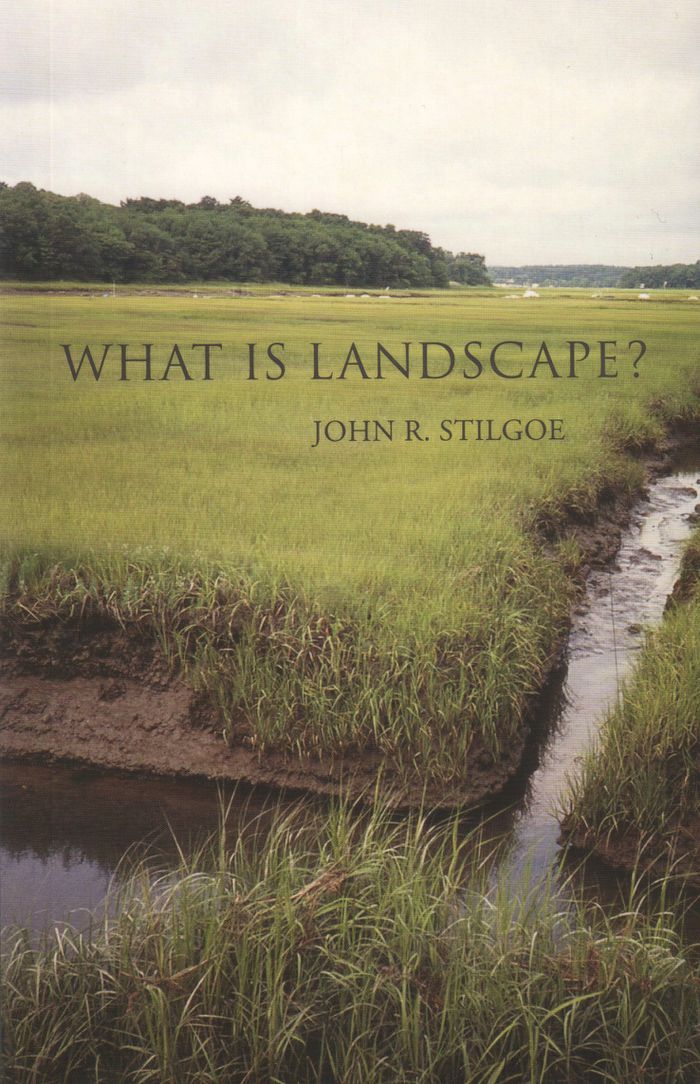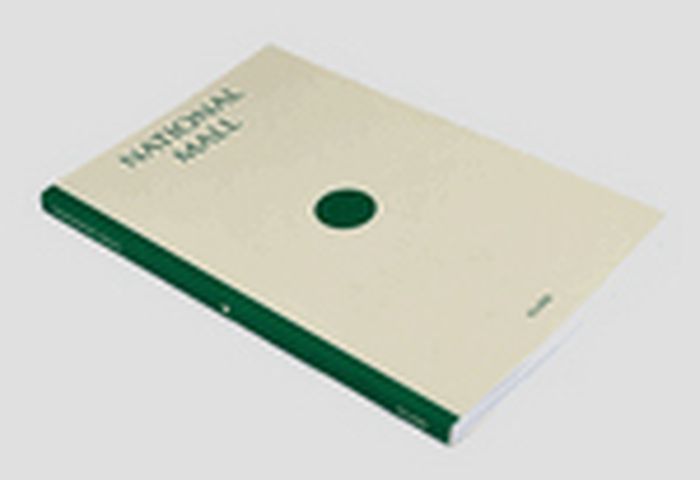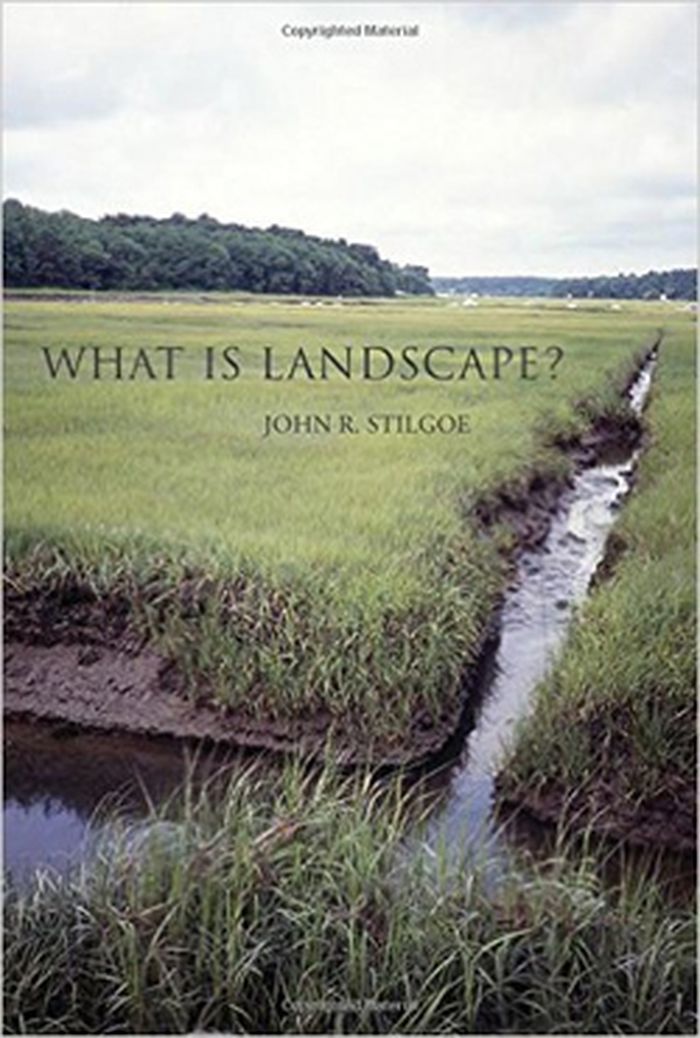36 Résultats
Classification:
livres
livres
Actions:
Exemplaires:
Description:
xiv, 264 pages : illustrations ; 21 cm
Description:
xiv, 264 pages : illustrations ; 21 cm
Auteur:
Sujet:
- Landscapes Philosophy.,
- Landscapes Terminology.,
- Paysages Philosophie.,
- Paysages Terminologie.,
- Landscapes.,
- Philosophy.,
- Landschaft,
- Kulturlandschaft,
- Landscape Philosophy.,
- Landscape Terminology.,
- Landskap teori, filosofi.
Publication:
Cambridge, Massachusetts : The MIT Press, [2015]
Cambridge, Massachusetts : The MIT Press, [2015]
Titre:
What is landscape? / John R. Stilgoe.
Actions:
Exemplaires:
Description:
xiv, 264 pages : illustrations ; 21 cm
What is landscape? / John R. Stilgoe.
Actions:
Exemplaires:
Description:
xiv, 264 pages : illustrations ; 21 cm
Classification:
livres
livres
Publication:
Cambridge, Massachusetts : The MIT Press, [2015]
Cambridge, Massachusetts : The MIT Press, [2015]
Auteur:
Sujet:
- Landscapes Philosophy.,
- Landscapes Terminology.,
- Paysages Philosophie.,
- Paysages Terminologie.,
- Landscapes.,
- Philosophy.,
- Landschaft,
- Kulturlandschaft,
- Landscape Philosophy.,
- Landscape Terminology.,
- Landskap teori, filosofi.
Classification:
livres
livres
Actions:
Exemplaires:
Description:
x, 285 pages : illustrations, maps ; 27 cm.
Description:
x, 285 pages : illustrations, maps ; 27 cm.
Auteur:
Sujet:
- L'Enfant, Pierre Charles, 1754-1825.,
- L'Enfant, Pierre Charles 1754-1825,
- Platz,
- L'Enfant, Pierre Charles.,
- City planning Washington (D.C.) History.,
- Public spaces Washington (D.C.),
- Open spaces Washington (D.C.),
- Landscape architecture Washington (D.C.),
- Plazas Washington (D.C.),
- Parks Washington (D.C.),
- Urban landscape architecture Washington (D.C.),
- Villes Embellissement États-Unis Washington (D.C.),
- Espaces publics Washington (D.C.),
- Espaces verts Washington (D.C.),
- Paysage urbain Washington (D.C.),
- Places Washington (D.C.),
- Parcs Washington (D.C.),
- Architecture du paysage Washington (D.C.),
- Urban landscape architecture,
- Buildings,
- City planning,
- Landscape architecture,
- Open spaces,
- Parks,
- Plazas,
- Public spaces,
- Travel,
- Architektur,
- Stadtplanung,
- Stadtlandschaft,
- Washington (D.C.) Buildings, structures, etc.,
- Washington (D.C.) Description and travel.,
- Washington (D.C.) Constructions.,
- Washington (D.C.) Descriptions et voyages.,
- Washington (D.C.),
- Washington, DC,
- History
Publication:
Baltimore, Maryland : Johns Hopkins University Press, [2006]
Baltimore, Maryland : Johns Hopkins University Press, [2006]
Titre:
L'Enfant's legacy : public open spaces in Washington, D.C. / Michael Bednar.
Actions:
Exemplaires:
Description:
x, 285 pages : illustrations, maps ; 27 cm.
L'Enfant's legacy : public open spaces in Washington, D.C. / Michael Bednar.
Actions:
Exemplaires:
Description:
x, 285 pages : illustrations, maps ; 27 cm.
Classification:
livres
livres
Publication:
Baltimore, Maryland : Johns Hopkins University Press, [2006]
Baltimore, Maryland : Johns Hopkins University Press, [2006]
Auteur:
Sujet:
- L'Enfant, Pierre Charles, 1754-1825.,
- L'Enfant, Pierre Charles 1754-1825,
- Platz,
- L'Enfant, Pierre Charles.,
- City planning Washington (D.C.) History.,
- Public spaces Washington (D.C.),
- Open spaces Washington (D.C.),
- Landscape architecture Washington (D.C.),
- Plazas Washington (D.C.),
- Parks Washington (D.C.),
- Urban landscape architecture Washington (D.C.),
- Villes Embellissement États-Unis Washington (D.C.),
- Espaces publics Washington (D.C.),
- Espaces verts Washington (D.C.),
- Paysage urbain Washington (D.C.),
- Places Washington (D.C.),
- Parcs Washington (D.C.),
- Architecture du paysage Washington (D.C.),
- Urban landscape architecture,
- Buildings,
- City planning,
- Landscape architecture,
- Open spaces,
- Parks,
- Plazas,
- Public spaces,
- Travel,
- Architektur,
- Stadtplanung,
- Stadtlandschaft,
- Washington (D.C.) Buildings, structures, etc.,
- Washington (D.C.) Description and travel.,
- Washington (D.C.) Constructions.,
- Washington (D.C.) Descriptions et voyages.,
- Washington (D.C.),
- Washington, DC,
- History
Classification:
livres
livres
Titre:
Carrot city : creating places for urban agriculture / Mark Gorgolewski, June Komisar, and Joe Nasr.
Carrot city : creating places for urban agriculture / Mark Gorgolewski, June Komisar, and Joe Nasr.
Actions:
Exemplaires:
Description:
240 pages : illustrations (chiefly color), maps (chiefly color) ; 28 cm
Description:
240 pages : illustrations (chiefly color), maps (chiefly color) ; 28 cm
Auteur:
Sujet:
- Urban agriculture.,
- Agriculture urbaine.,
- urban agriculture.,
- towns.,
- urban planning.,
- design.,
- Landschaftsgestaltung,
- Nutzpflanzen,
- Stadtgrün,
- Städtische Landwirtschaft,
- Jordbruk.,
- Trädgårdsodling.,
- Städer.
Publication:
New York : Monacelli Press, [2011]
New York : Monacelli Press, [2011]
Titre:
Carrot city : creating places for urban agriculture / Mark Gorgolewski, June Komisar, and Joe Nasr.
Actions:
Exemplaires:
Description:
240 pages : illustrations (chiefly color), maps (chiefly color) ; 28 cm
Carrot city : creating places for urban agriculture / Mark Gorgolewski, June Komisar, and Joe Nasr.
Actions:
Exemplaires:
Description:
240 pages : illustrations (chiefly color), maps (chiefly color) ; 28 cm
Classification:
livres
livres
Publication:
New York : Monacelli Press, [2011]
New York : Monacelli Press, [2011]
Auteur:
Sujet:
- Urban agriculture.,
- Agriculture urbaine.,
- urban agriculture.,
- towns.,
- urban planning.,
- design.,
- Landschaftsgestaltung,
- Nutzpflanzen,
- Stadtgrün,
- Städtische Landwirtschaft,
- Jordbruk.,
- Trädgårdsodling.,
- Städer.
Titre:
What is landscape?
What is landscape?
Actions:
Prix:
$25.95
(disponible sur commande)
Résumé:
"What Is Landscape?" is an invitation to walk, to notice, to ask: to see a sandcastle with a pinwheel at the beach and think of Dutch windmills icons of triumph, markers of territory won from the sea; to walk in the woods and be amused by the Elizabethans' misuse of the Latin silvaticus (people of the woods) to coin the word savages; to see in a suburban front lawn a(...)
$25.95
(disponible sur commande)
Résumé:
"What Is Landscape?" is an invitation to walk, to notice, to ask: to see a sandcastle with a pinwheel at the beach and think of Dutch windmills icons of triumph, markers of territory won from the sea; to walk in the woods and be amused by the Elizabethans' misuse of the Latin silvaticus (people of the woods) to coin the word savages; to see in a suburban front lawn a(...)
Titre:
What is landscape?
Actions:
Prix:
$25.95
(disponible sur commande)
Résumé:
"What Is Landscape?" is an invitation to walk, to notice, to ask: to see a sandcastle with a pinwheel at the beach and think of Dutch windmills icons of triumph, markers of territory won from the sea; to walk in the woods and be amused by the Elizabethans' misuse of the Latin silvaticus (people of the woods) to coin the word savages; to see in a suburban front lawn a representation of the meadow of a medieval freehold.
What is landscape?
Actions:
Prix:
$25.95
(disponible sur commande)
Résumé:
"What Is Landscape?" is an invitation to walk, to notice, to ask: to see a sandcastle with a pinwheel at the beach and think of Dutch windmills icons of triumph, markers of territory won from the sea; to walk in the woods and be amused by the Elizabethans' misuse of the Latin silvaticus (people of the woods) to coin the word savages; to see in a suburban front lawn a representation of the meadow of a medieval freehold.
Sujet:
Théorie du paysage
Théorie du paysage
Titre:
CLOG 5: National Mall
CLOG 5: National Mall
Actions:
Prix:
$18.00
(disponible en magasin)
Résumé:
In 2009, nearly two million people gathered on the National Mall to witness the inauguration of the forty-fourth President of the United States, Barack Obama. Almost fifty years ago on the same grounds, Martin Luther King, Jr. delivered his "I Have a Dream" speech. "America's Front Lawn," the National Mall was not only designed for large political and social gatherings(...)
$18.00
(disponible en magasin)
Résumé:
In 2009, nearly two million people gathered on the National Mall to witness the inauguration of the forty-fourth President of the United States, Barack Obama. Almost fifty years ago on the same grounds, Martin Luther King, Jr. delivered his "I Have a Dream" speech. "America's Front Lawn," the National Mall was not only designed for large political and social gatherings(...)
Titre:
CLOG 5: National Mall
Actions:
Prix:
$18.00
(disponible en magasin)
Résumé:
In 2009, nearly two million people gathered on the National Mall to witness the inauguration of the forty-fourth President of the United States, Barack Obama. Almost fifty years ago on the same grounds, Martin Luther King, Jr. delivered his "I Have a Dream" speech. "America's Front Lawn," the National Mall was not only designed for large political and social gatherings but also to collect and showcase America's culture. Located in the heart of Washington D.C., the Mall is an historic yet evolving example of urban design. Visited annually by approximately thirty million people, the Mall is also a victim of its own success as its grounds and monuments have been steadily eroded by overcrowding in addition to budgetary and administrative pressures. In response to this decline, the newly-formed Trust for the National Mall recently sponsored a competition to redesign key areas of the National Mall. It's time to critically discuss the space that perhaps more than any other reflects what the nation was, is, and wants to be - the National Mall.
CLOG 5: National Mall
Actions:
Prix:
$18.00
(disponible en magasin)
Résumé:
In 2009, nearly two million people gathered on the National Mall to witness the inauguration of the forty-fourth President of the United States, Barack Obama. Almost fifty years ago on the same grounds, Martin Luther King, Jr. delivered his "I Have a Dream" speech. "America's Front Lawn," the National Mall was not only designed for large political and social gatherings but also to collect and showcase America's culture. Located in the heart of Washington D.C., the Mall is an historic yet evolving example of urban design. Visited annually by approximately thirty million people, the Mall is also a victim of its own success as its grounds and monuments have been steadily eroded by overcrowding in addition to budgetary and administrative pressures. In response to this decline, the newly-formed Trust for the National Mall recently sponsored a competition to redesign key areas of the National Mall. It's time to critically discuss the space that perhaps more than any other reflects what the nation was, is, and wants to be - the National Mall.
Sujet:
Revues
Revues
Titre:
What is landscape?
What is landscape?
Actions:
Prix:
$29.50
(disponible sur commande)
Résumé:
Landscape, John Stilgoe tells us, is a noun. From the old Frisian language (once spoken in coastal parts of the Netherlands and Germany), it meant shoveled land: landschop. Sixteenth-century Englishmen misheard or mispronounced this as landskep, which became landskip, then landscape, designating the surface of the earth shaped for human habitation. In What Is Landscape?(...)
$29.50
(disponible sur commande)
Résumé:
Landscape, John Stilgoe tells us, is a noun. From the old Frisian language (once spoken in coastal parts of the Netherlands and Germany), it meant shoveled land: landschop. Sixteenth-century Englishmen misheard or mispronounced this as landskep, which became landskip, then landscape, designating the surface of the earth shaped for human habitation. In What Is Landscape?(...)
Titre:
What is landscape?
Actions:
Prix:
$29.50
(disponible sur commande)
Résumé:
Landscape, John Stilgoe tells us, is a noun. From the old Frisian language (once spoken in coastal parts of the Netherlands and Germany), it meant shoveled land: landschop. Sixteenth-century Englishmen misheard or mispronounced this as landskep, which became landskip, then landscape, designating the surface of the earth shaped for human habitation. In What Is Landscape? Stilgoe maps the discovery of landscape by putting words to things, zeroing in on landscape’s essence but also leading sideways expeditions through such sources as children’s picture books, folklore, deeds, antique terminology, out-of-print dictionaries, and conversations with locals. (“What is that?” “Well, it’s not really a slough, not really, it’s a bayou . . .”) He offers a written narrative lexicon of landscape as word, concept, and path to discoveries. What Is Landscape? is an invitation to walk, to notice, to ask: to see a sandcastle with a pinwheel at the beach and think of Dutch windmills—icons of triumph, markers of territory won from the sea; to walk in the woods and be amused by the Elizabethans’ misuse of the Latin silvaticus (people of the woods) to coin the word savages; to see in a suburban front lawn a representation of the meadow of a medieval freehold.
What is landscape?
Actions:
Prix:
$29.50
(disponible sur commande)
Résumé:
Landscape, John Stilgoe tells us, is a noun. From the old Frisian language (once spoken in coastal parts of the Netherlands and Germany), it meant shoveled land: landschop. Sixteenth-century Englishmen misheard or mispronounced this as landskep, which became landskip, then landscape, designating the surface of the earth shaped for human habitation. In What Is Landscape? Stilgoe maps the discovery of landscape by putting words to things, zeroing in on landscape’s essence but also leading sideways expeditions through such sources as children’s picture books, folklore, deeds, antique terminology, out-of-print dictionaries, and conversations with locals. (“What is that?” “Well, it’s not really a slough, not really, it’s a bayou . . .”) He offers a written narrative lexicon of landscape as word, concept, and path to discoveries. What Is Landscape? is an invitation to walk, to notice, to ask: to see a sandcastle with a pinwheel at the beach and think of Dutch windmills—icons of triumph, markers of territory won from the sea; to walk in the woods and be amused by the Elizabethans’ misuse of the Latin silvaticus (people of the woods) to coin the word savages; to see in a suburban front lawn a representation of the meadow of a medieval freehold.
Sujet:
Théorie du paysage
Théorie du paysage


